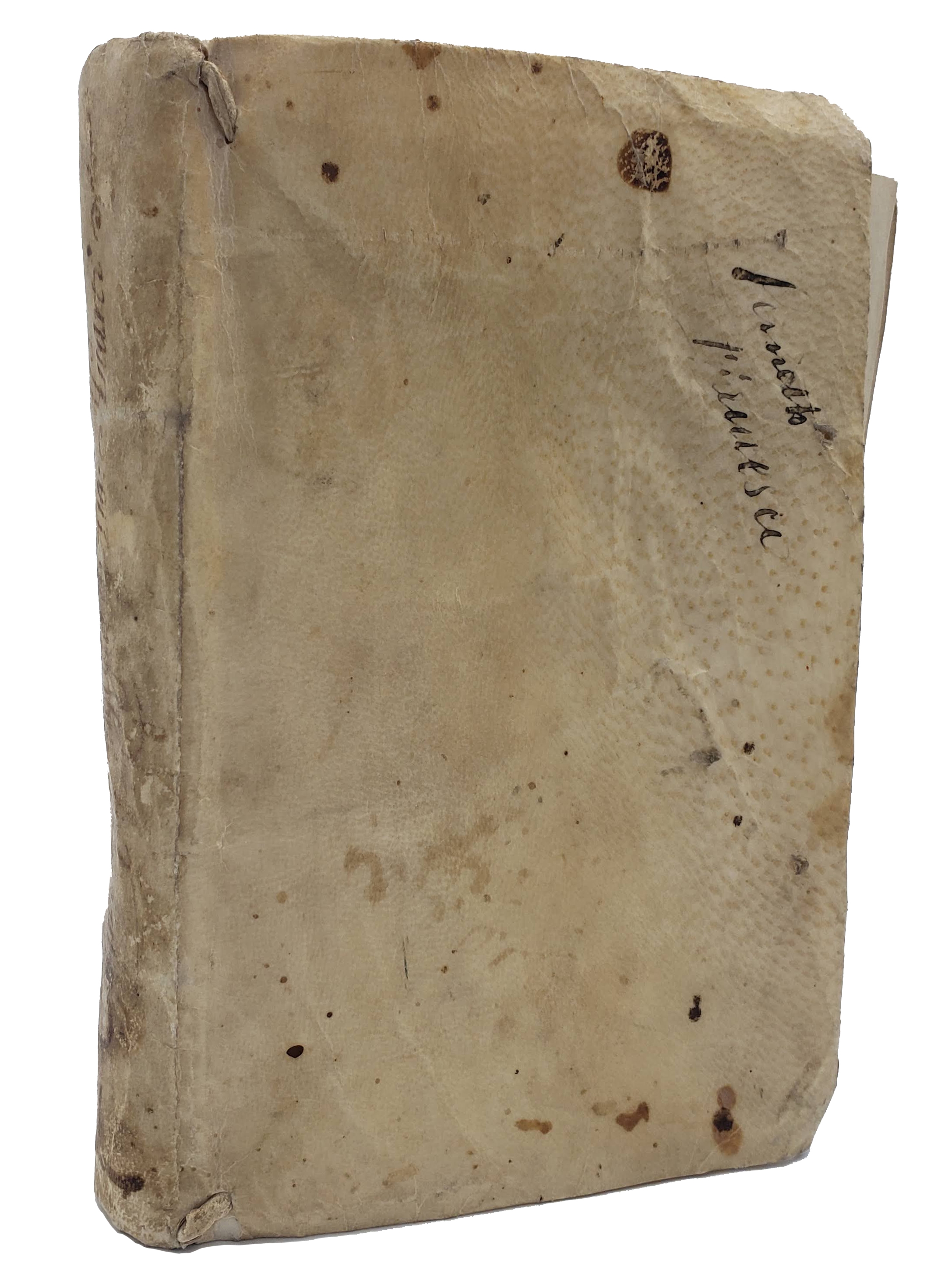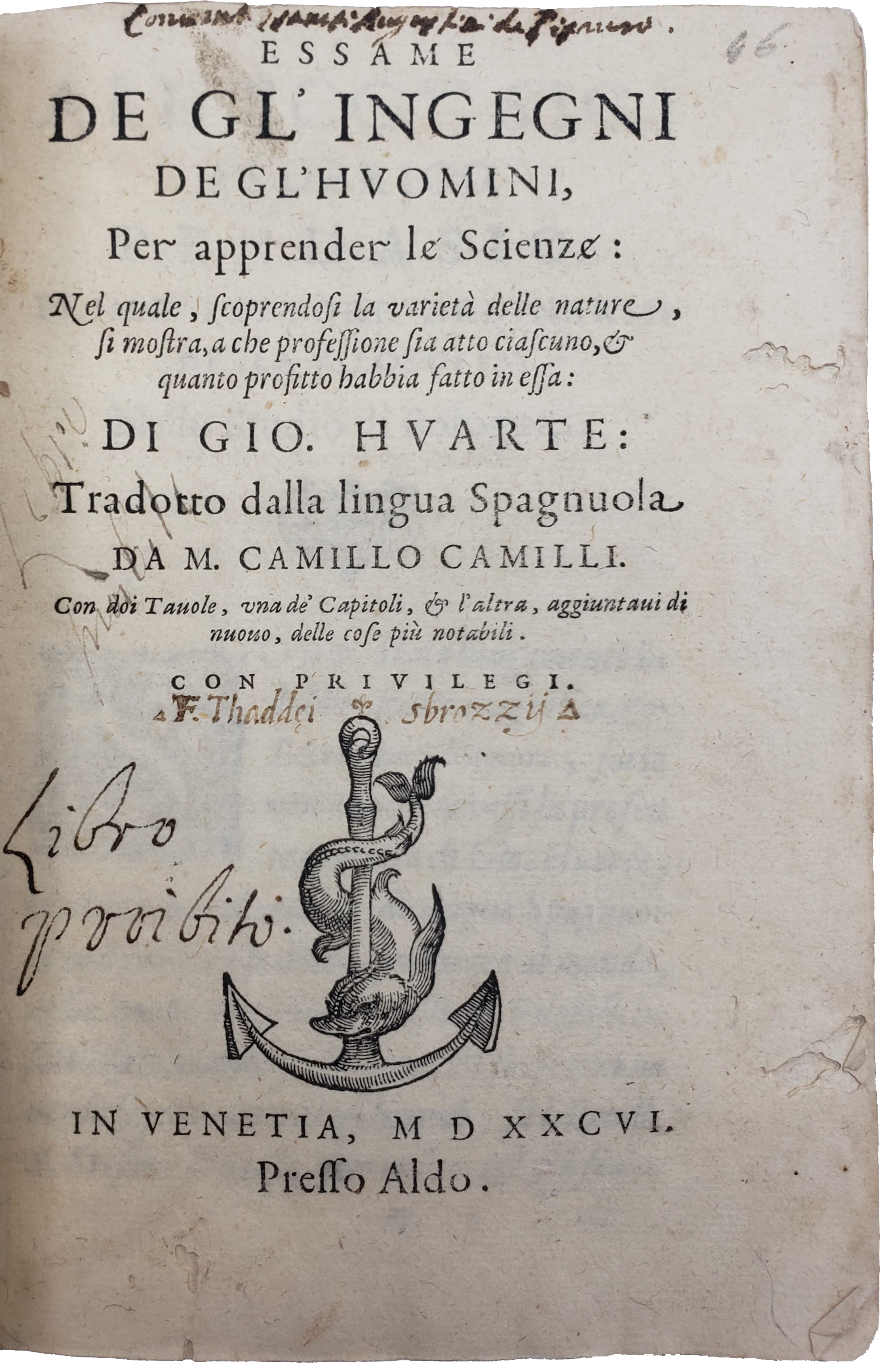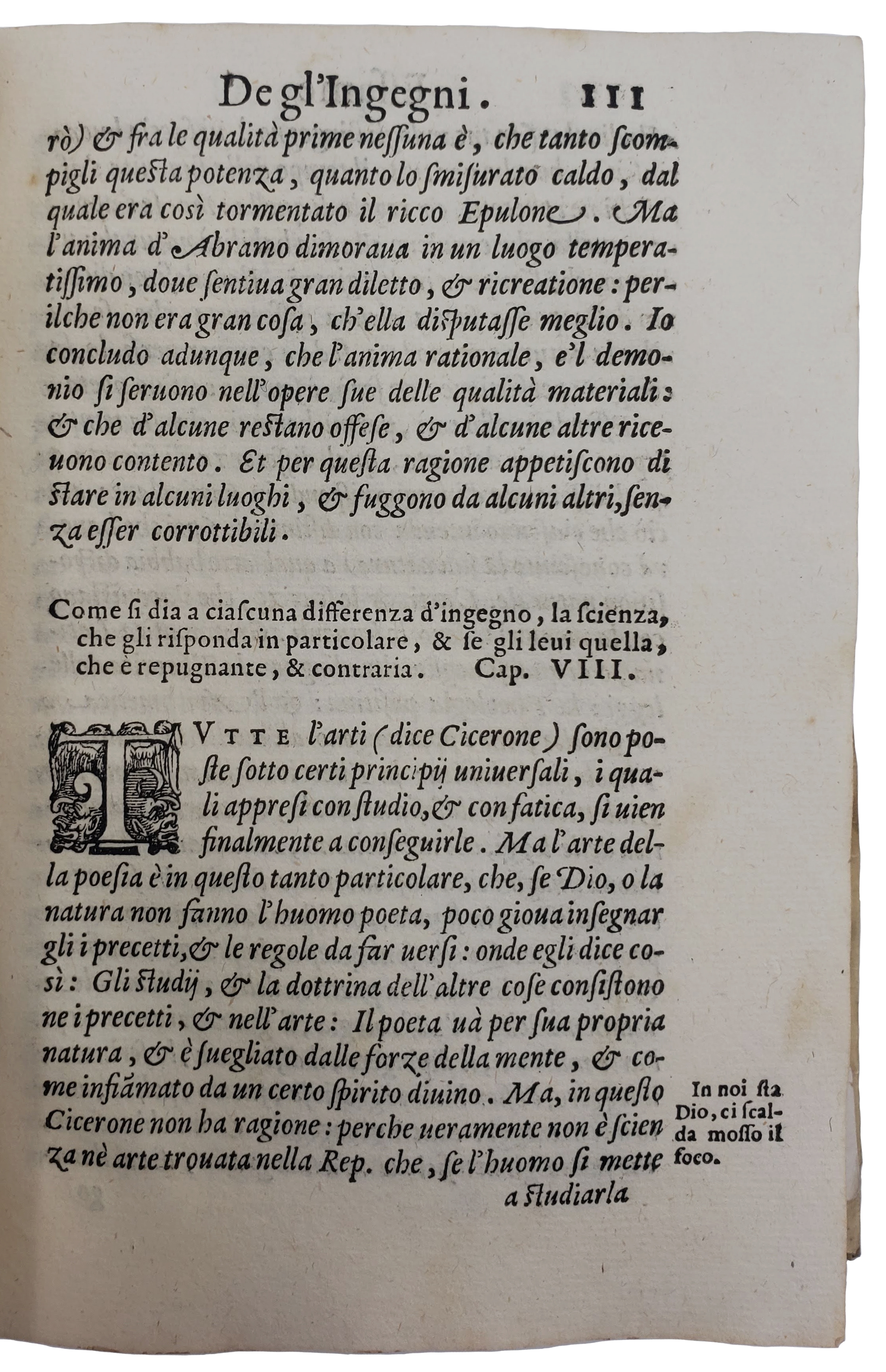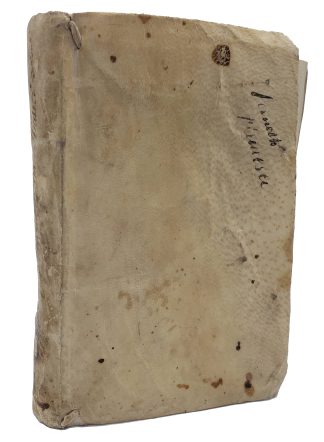SAN JUAN, Juan Huarte de; CAMILLI, Camillo, trans.
PROHIBITED MEDICINE, PSYCHOLOGY, PEDAGOGY
Essame de gl’ingegni de gl’huomini, per apprender le Scienze.
Venice., Presso Aldo., 1586.£1,950.00
8vo. pp. [24], 367, [1]. Italic letter, little Roman. Woodcut printer’s device to title, decorated initials and ornaments. Light age yellowing, a little browning, small holes to outer blank margin of title and first, very light water stain at foot of last gathering. A very good copy in contemporary limp vellum, lacking ties, ms title to spine and lower edge, couple of ink marks or pen trials to covers, modern eps. C17 ms ‘Conventus Heremit. Aug. Ex Libris(?) de Pi(?)eso’, cont. ms. F. Thaddei Sbrozzij, and C17 ms ‘Libro Proibito’ to title.
The second, expanded Aldine edition of the Italian translation of this intriguing work bringing together psychology and medicine. Juan Huarte de San Juan (1529-88) was a Spanish humanist and physician who trained at Alcalá. First published in Spanish in 1575, ‘Examen de ingegnos’ was his great masterpiece. The ‘Essame’ was included on the Index as a prohibited book – at least by 1605, the present copy has a ms ‘Libro proibito’ on the titlepage. Nevertheless it was greatly successful, translated into several European languages (including German by the philosopher G.E. Lessing), and even English. Huarte used as a starting point the humanist pedagogical theories, to explore, with the help of Galenic medicine, the concept of talent, ‘its diversity and richness, and how it affects the development of an individual in the professional sphere’ (Morilla, p.161). It begins with a discussion of ‘ingenium’, various kinds of intelligence, and how the humours influence individual character and temperament. The first section demonstrates with an example how, if a child does not have the intelligence required for knowledge he has to acquire, not even good teachers, lots of books, and constant study will make him succeed. There follow sections on how and why some people are good at learning, and how this is helped by specific physical characteristics. Three chapters also explain how specific kinds of intelligence and memory may favour children for professions in the fields of theology, law, medicine, the military or royalty. These chapters examine physiology and diet in relation with ‘ingenium’, seeking ‘to align each temperament with a kind of intelligence’ (Morilla, p.164). A chapter is devoted to ways of having intelligent children who will benefit from education, with specific instructions on physical procreation, the most appropriate environment so that they may be born male, not female, and how their intelligence may be preserved as they grow up. A most interesting, most unusual work, in many ways ahead of its time.
USTC 835991; EDIT16 CNCE 22981; Renouard 411:1; Durling 2501; Wellcome I, 3336 (1590 ed.). Not in Ahmanson-Murphy (but now at UCLA). S. Morilla & J. Tascon, ‘El Examen de Ingenios de Huarte San Juan’, Studia Philologica Valentina, 25 (2023), pp.159-68.In stock





